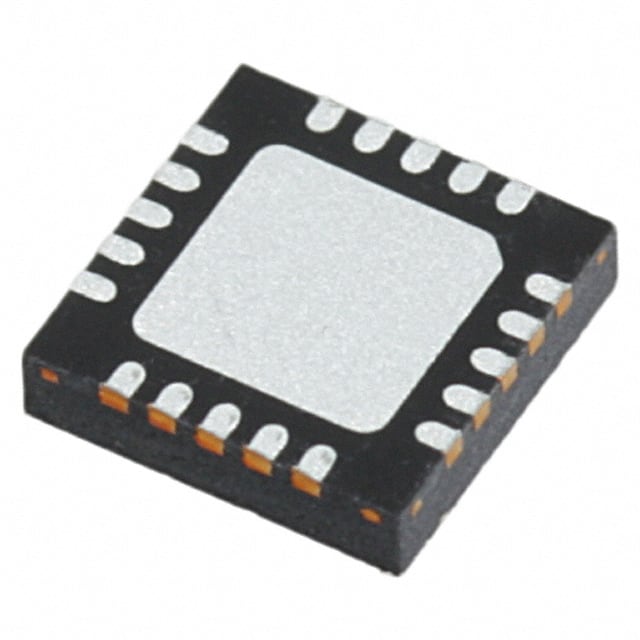Siehe Spezifikationen für Produktdetails.

CAP1128-1-BP-TR
Product Overview
Category
CAP1128-1-BP-TR belongs to the category of integrated circuits (ICs).
Use
This product is primarily used for capacitive touch sensing applications.
Characteristics
- Integrated circuit
- Capacitive touch sensing technology
- Low power consumption
- Small form factor
Package
The CAP1128-1-BP-TR is available in a small outline package (SOP) format.
Essence
The essence of CAP1128-1-BP-TR lies in its ability to enable capacitive touch sensing in various electronic devices.
Packaging/Quantity
The product is typically packaged in reels and is available in quantities suitable for mass production.
Specifications
- Number of capacitive touch sensor inputs: 8
- Supply voltage range: 1.71V to 3.63V
- Operating temperature range: -40°C to +85°C
- Communication interface: I2C
- Power consumption: Low power mode available
- Dimensions: Varies based on package type
Detailed Pin Configuration
The CAP1128-1-BP-TR features the following pin configuration:
- VDD - Power supply input
- SDA - I2C data line
- SCL - I2C clock line
- IRQ - Interrupt output
- GND - Ground connection
- TCH0-TCH7 - Capacitive touch sensor inputs
Functional Features
- Capacitive touch sensing: The CAP1128-1-BP-TR enables touch detection through capacitive sensing technology.
- Multi-channel support: It supports up to 8 capacitive touch sensor inputs, allowing for versatile touch control options.
- Low power consumption: The product offers low power modes, making it suitable for battery-powered devices.
- Interrupt output: The IRQ pin provides an interrupt signal to the host microcontroller when a touch event is detected.
Advantages and Disadvantages
Advantages
- High sensitivity and accuracy in touch detection
- Compact size for easy integration into various devices
- Low power consumption extends battery life
- Versatile multi-channel support
Disadvantages
- Requires external microcontroller for full functionality
- Limited number of touch sensor inputs (8)
Working Principles
The CAP1128-1-BP-TR utilizes capacitive touch sensing technology to detect touch events. It measures changes in capacitance caused by the proximity or touch of a conductive object, such as a finger. These changes are then processed and interpreted as touch inputs.
Detailed Application Field Plans
The CAP1128-1-BP-TR finds applications in various fields, including:
- Consumer electronics: Touch-sensitive buttons, sliders, and wheels in smartphones, tablets, and remote controls.
- Home automation: Touch-based control panels for lighting, temperature, and security systems.
- Automotive: Capacitive touch interfaces for infotainment systems, climate control, and vehicle controls.
- Industrial control: Human-machine interfaces (HMIs) for machinery and equipment control.
- Medical devices: Touch-sensitive interfaces for medical equipment and devices.
Detailed and Complete Alternative Models
- CAP1188-1-BP-TR: Similar to CAP1128-1-BP-TR, but with 10 capacitive touch sensor inputs.
- CAP1298-1-BP-TR: Offers 12 capacitive touch sensor inputs and additional features like proximity sensing.
- CAP1166-1-BP-TR: Provides 6 capacitive touch sensor inputs and supports I2C communication.
These alternative models offer similar functionality to CAP1128-1-BP-TR but with varying specifications and capabilities.
Word count: 511 words
Listen Sie 10 häufige Fragen und Antworten im Zusammenhang mit der Anwendung von CAP1128-1-BP-TR in technischen Lösungen auf
Sure! Here are 10 common questions and answers related to the application of CAP1128-1-BP-TR in technical solutions:
Q1: What is CAP1128-1-BP-TR? A1: CAP1128-1-BP-TR is a specific model of capacitive touch sensor controller IC that can be used in various technical solutions.
Q2: What are the key features of CAP1128-1-BP-TR? A2: The key features of CAP1128-1-BP-TR include 12 capacitive touch sensor inputs, I2C interface, low power consumption, and programmable sensitivity settings.
Q3: How can CAP1128-1-BP-TR be used in technical solutions? A3: CAP1128-1-BP-TR can be used to implement touch-sensitive buttons, sliders, or other touch-based input interfaces in electronic devices or systems.
Q4: What is the operating voltage range for CAP1128-1-BP-TR? A4: CAP1128-1-BP-TR operates within a voltage range of 1.71V to 3.63V.
Q5: Can CAP1128-1-BP-TR support multiple simultaneous touches? A5: Yes, CAP1128-1-BP-TR supports multiple simultaneous touches, allowing for more advanced touch interactions.
Q6: Is CAP1128-1-BP-TR compatible with different microcontrollers? A6: Yes, CAP1128-1-BP-TR can be easily interfaced with various microcontrollers through its I2C interface.
Q7: Does CAP1128-1-BP-TR have built-in noise filtering capabilities? A7: Yes, CAP1128-1-BP-TR incorporates built-in noise filtering algorithms to improve touch detection accuracy in noisy environments.
Q8: Can CAP1128-1-BP-TR be used in battery-powered devices? A8: Yes, CAP1128-1-BP-TR has low power consumption and can be used in battery-powered devices to conserve energy.
Q9: Are there any programming examples or libraries available for CAP1128-1-BP-TR? A9: Yes, the manufacturer provides programming examples and libraries to assist developers in implementing CAP1128-1-BP-TR in their technical solutions.
Q10: Where can I find more detailed technical documentation about CAP1128-1-BP-TR? A10: You can refer to the datasheet and application notes provided by the manufacturer for more detailed technical information about CAP1128-1-BP-TR.

